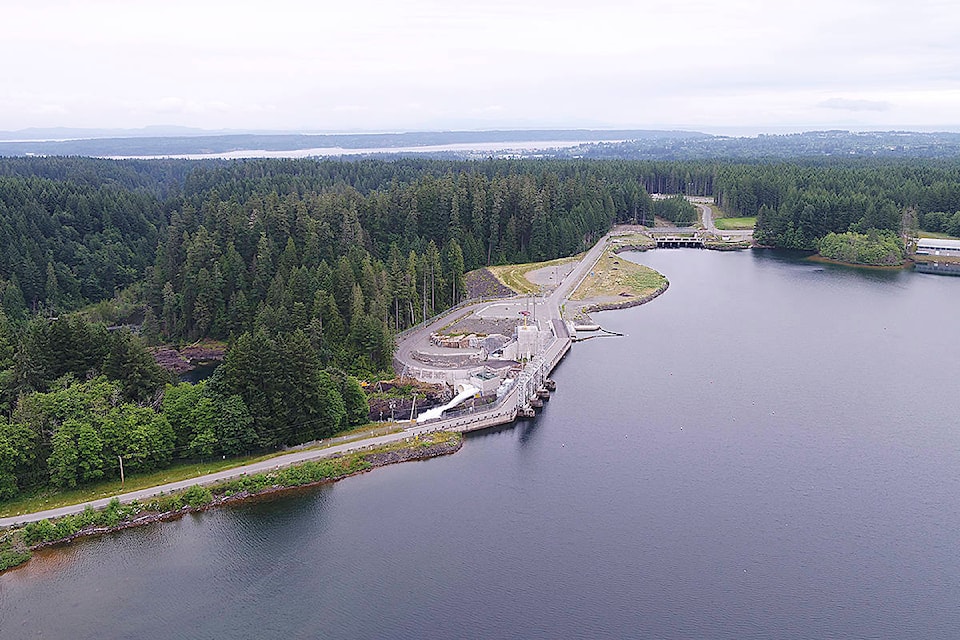The John Hart Dam seismic upgrade will truck more than twice as much earthfill in and out of the site as was moved in the dam’s replacement project.
About 700,000 cubic metres of earthfill, or enough to fill about 280 Olympic-sized swimming pools, is planned to be removed or trucked in for their proposed upgrade project, according to BC Hydro.
“If we compare these preliminary earthfill amounts to the previous John Hart Generating Station Replacement Project, for example, and the blasting out of all that rock material for the underground tunnels and powerhouse, that total was about 300,000 cubic metres,” said BC Hydro and project spokesperson, Stephen Watson. “So this project is well over double that amount, which should not be too surprising given the size of the largely earthfill dam.”
The billion dollar replacement project, which removed the old generating station below the dam and replaced it with an underground plant and tunnels, was completed in 2019 after being launched in 2007. BC Hydro is now turning its attention to the dam itself to give it a seismic upgrade.
The dam is over 800 metres long, and while the length and height won’t change, the width will as the utility plans seismic upgrades so that it can withstand a severe earthquake and maintain downstream public safety. A significant part of that work is removing some material within the reservoir and then placing new compacted material to widen the dam. The primary areas for that work is the Middle Earthfill Dam and the North Earthfill Dam. BC Hydro has previously stated they will use double silt curtains to isolate the work area within the John Hart Reservoir to protect water quality for domestic water supply and fish.
The type of earthfill materials to be brought in include rock, gravel and sand.
Watson said the previous project had about eight trucks constantly moving back and forth, and that it may be double that for this project. He also said some of the removed materials, mainly the clean material removed from the reservoir, may all be stored within BC Hydro’s John Hart property along the old penstock corridor.
“There was a significant excavation in the 1940s to build the old woodstave penstocks and we are looking to fill in a large portion of that corridor with the reservoir dredge material,” said Watson. “There is also a chance that the material may all go off-site to a nearby area. Where the clean material may be stored and where the new material may come from will be determined when we engage the project contractor.”
If the penstock corridor is used, the trail to the Elk Falls suspension bridge will become a land trail, and the existing bridge across the corridor will be removed and may be relocated within the community.
A general commercial dump truck can carry about 10 cubic metres, so with about 700,000 cubic metres of material, that’s about 70,000 dump truck trips.
However, Watson said they may likely use tandem trucks versus just single dump trucks, and cut those trips nearly in half. The earthfill truck hauling may take about three years.
Brewster Lake Road will be closed around the John Hart Dam area for about six years, starting in 2023.
BC Hydro plans to submit an application to the BC Utilities Commission and begin the procurement process for the earthfill works this summer.
Construction may begin in 2023 pending funding and approvals.
